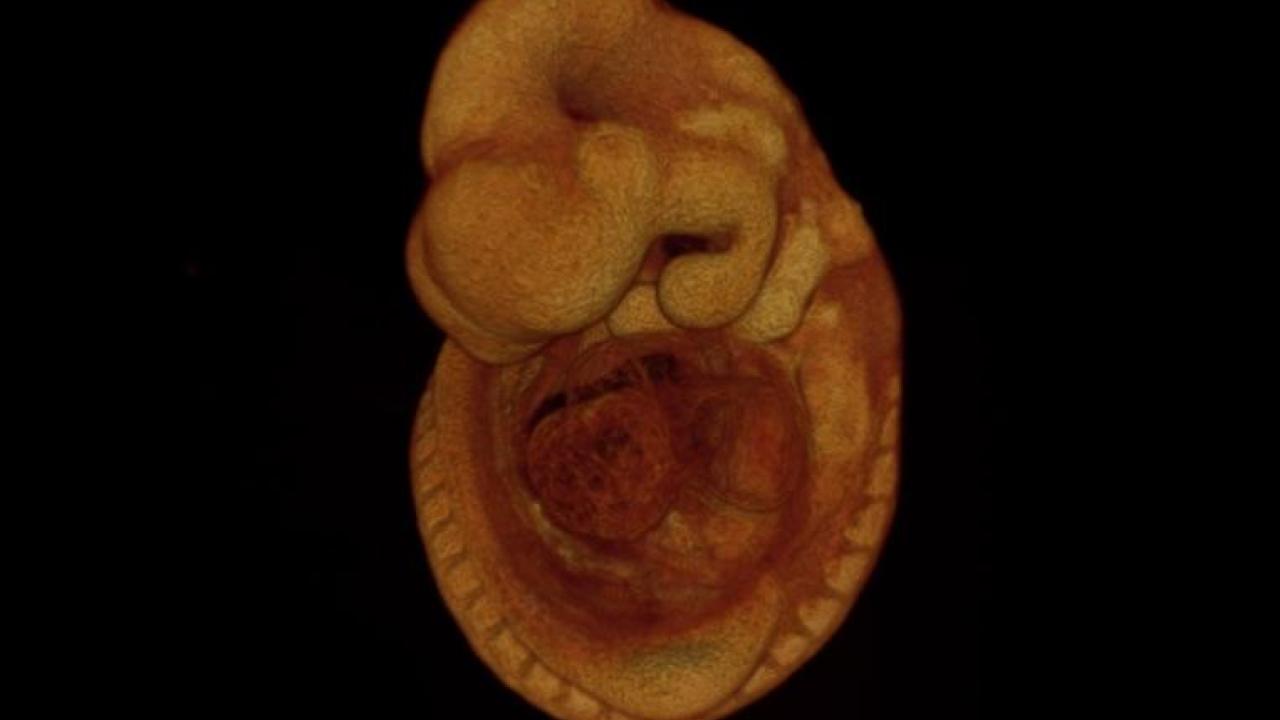
CMGI Helps International Team Pinpoint Mouse Genes Essential for Life
The Center for Genomic and Molecular Imaging (CMGI) performed crucial imaging studies that have helped the International Mouse Phenotyping Consortium determine which of the mouse’s genes are essential for life.
Using a standardized phenotyping platform that incorporates high-resolution 3D imaging, provided by CMGI, the team identified phenotypes at multiple time points for previously uncharacterized genes and additional phenotypes for genes with previously reported mutant phenotypes. In “High-throughput discovery of novel developmental phenotypes“, published recently in Nature, the team describes how they used embryonic stem cells to develop 1,751 strains of knockout mice, each carrying two inactivated copies of a different gene on an otherwise identical genetic background. They learned that the loss of 410 of those first 1,751 genes, the embryo would not result in a live birth. Loss or mutation of these genes causes the embryo to die.
Many of the mouse genes are similar to human genes, and could lead scientists to the causes of human genetic disorders with causes they currently don’t understand.
All data and images generated by the project are available to the research community via an open-source web portal in real time without embargo. The knockout mice generated are also available to other researchers who may be investigating particular pathways or disease phenotypes.
More information:
